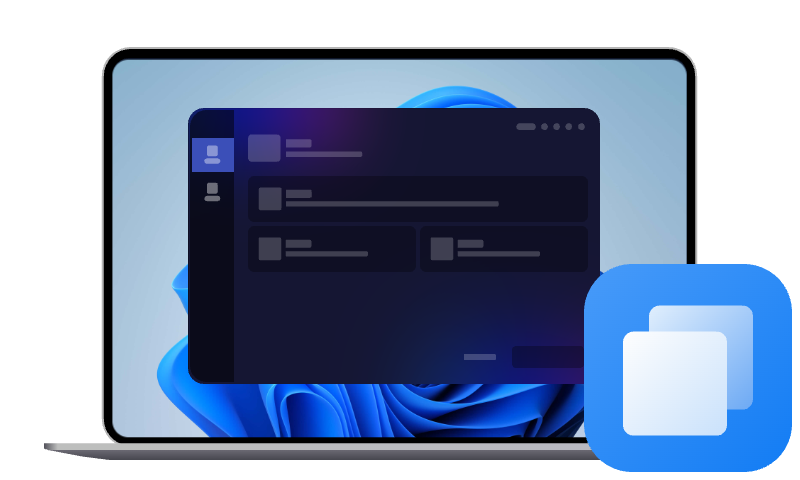How to Clone a BitLocker Encrypted Disk Without Data Loss
Cloning a BitLocker-encrypted disk is crucial for upgrading storage or backing up data without compromising security. This guide explains the best methods to clone an encrypted disk and manage BitLocker after cloning.
Cloning a BitLocker-encrypted disk is a critical task when upgrading to a new hard drive or backing up your data securely. However, many users worry about preserving the BitLocker encryption during the cloning process to avoid losing sensitive data.
This article will guide you through the process of cloning a BitLocker-encrypted disk, ensuring the encryption is preserved and your data stays safe.
Can You Clone a BitLocker Encrypted Disk?
Yes, it is possible to clone a BitLocker-encrypted disk, but it requires careful attention. BitLocker encryption is designed to protect your data by preventing unauthorized access, so cloning an encrypted disk isn’t as straightforward as cloning a standard, unencrypted disk.
To clone BitLocker disk successfully, you need to:
1. Use reliable disk cloning software that supports sector-by-sector cloning to preserve encryption.
2. Ensure the target disk has enough space to accommodate the source disk.
3. Decide whether to keep BitLocker encryption on the cloned disk or temporarily suspend it during the cloning process.
With the right tools and steps, cloning BitLocker drive can be done without compromising encryption or security.
The Best Way to Clone a BitLocker Encrypted Disk
A reliable disk cloning tool like AOMEI Cloner can help you clone BitLocker drive to SSD without disabling encryption. This software supports sector-by-sector cloning, ensuring the cloned disk retains its encryption settings. With these features, AOMEI Cloner ensures a secure and hassle-free cloning experience.

- Sector-by-Sector Cloning: Ensures all encrypted data remains intact without requiring decryption.
- BitLocker Compatibility: Fully supports Windows 10/11 Pro, Enterprise editions, and all Windows Server OS.
- Beginner-Friendly Interface: No technical expertise required.
- Data Integrity Protection: Prevents BitLocker recovery mode activation post-cloning.
Step 1: Prepare for Cloning
Before starting the cloning process, ensure the following:
- The target disk is connected and recognized by your system.
- The target disk has equal or greater storage capacity than the source disk.
- Make a backup of important files, just in case something goes wrong.
- Turn off BitLocker (optional) temporarily if you want to simplify the cloning process.
Step 2: Install and Launch AOMEI Cloner
1. Download and install AOMEI Cloner on your PC.
2. Launch the program and click Clone > Disk Clone.
3. Select the BitLocker-encrypted disk as the source disk and the target disk for cloning.
Step 3: Select Sector-by-Sector Cloning
To preserve BitLocker encryption on the cloned disk, check the "Sector-by-Sector Clone" option. This ensures all sectors of the source disk are copied, including encrypted data.
Step 4: Begin the Cloning Process
Click Start Clone to initiate the cloning process. AOMEI Cloner will transfer all data, including the encryption keys, to the new disk. The cloning time may vary depending on the size of the disk.
Step 5: Verify the Cloned Disk
After cloning, shut down your PC, replace the old disk with the cloned one, and restart the system. The cloned disk should function just like the original, with BitLocker encryption intact.
Bonus Tip: How to Turn Off Windows 11/10 BitLocker After Cloning?
After successfully cloning disk with Bitlocker, you may decide to disable BitLocker on the new disk. This step will allow you to access the disk without needing a password every time you boot up. Here’s how to do it:
Method 1: Turn Off BitLocker via Control Panel
Step 1. Open Control Panel by pressing Win + R, typing control, and pressing Enter.
Step 2. Go to System and Security > BitLocker Drive Encryption.
Step 3. Find the cloned disk in the list and click Turn off BitLocker.
Step 4. Confirm the action, and the system will begin decrypting the disk. The process may take some time, depending on the disk size.
Method 2: Disable BitLocker Using Command Prompt
Step 1. Open Command Prompt as an administrator by searching for cmd in the Start menu and selecting Run as administrator.
Step 2. Type the following command to check the encryption status:
manage-bde -status
To disable BitLocker on the cloned disk (e.g., Drive C:), type:
manage-bde -off C:
Step 3. Wait for the decryption process to complete.
Disabling BitLocker will remove the encryption, allowing you to freely access the drive without needing the password or recovery key.
Conclusion
Cloning a BitLocker-encrypted disk is essential for users who want to upgrade their storage or create secure backups. Using reliable cloning software, such as AOMEI Cloner, and following the right steps ensures that the cloning process preserves encryption and system integrity.
Whether you decide to keep or disable BitLocker encryption after cloning, the process can be done smoothly and efficiently with the right precautions.
FAQs About Cloning a BitLocker Encrypted Disk
1. Can you copy files from a BitLocker encrypted drive?
Yes, you can copy files from a BitLocker encrypted drive, but you need to unlock the drive first by entering the BitLocker password or using the recovery key. Without unlocking the drive, you won't be able to access the files.
2. How to fix BitLocker Drive Encryption issue?
If you face issues with BitLocker encryption, such as the system asking for a password you don't have, try the following solutions:
- Use the BitLocker recovery key to unlock the drive.
- Turn off BitLocker via the Control Panel or the Command Prompt if you can access the drive.
- Repair BitLocker encryption using built-in Windows tools like manage-bde.
3. Can I move a BitLocker encrypted drive to another computer?
Yes, you can move a BitLocker-encrypted drive to another computer, but the drive will require you to enter the BitLocker password or recovery key to unlock it. Ensure the drive is connected to the new computer, and you'll be prompted to enter the decryption password for access.

